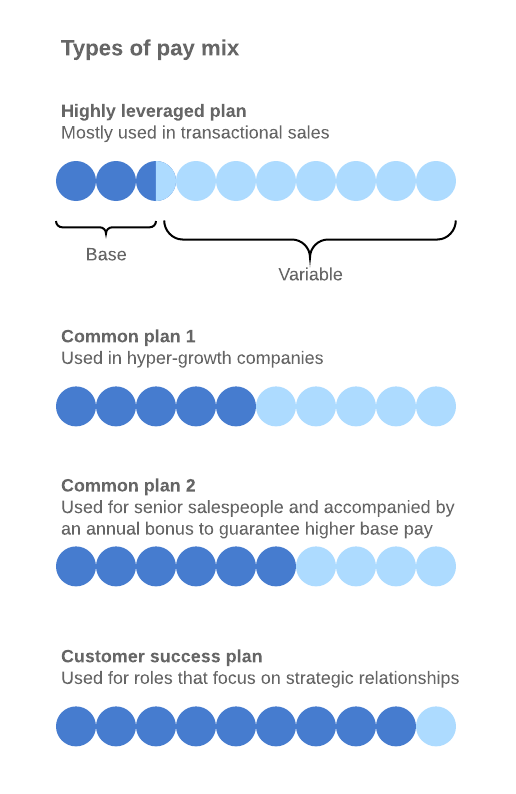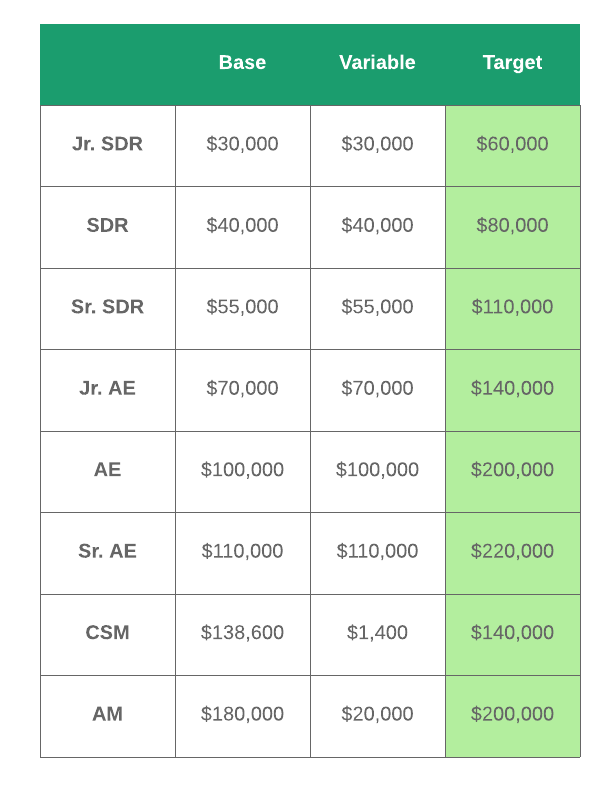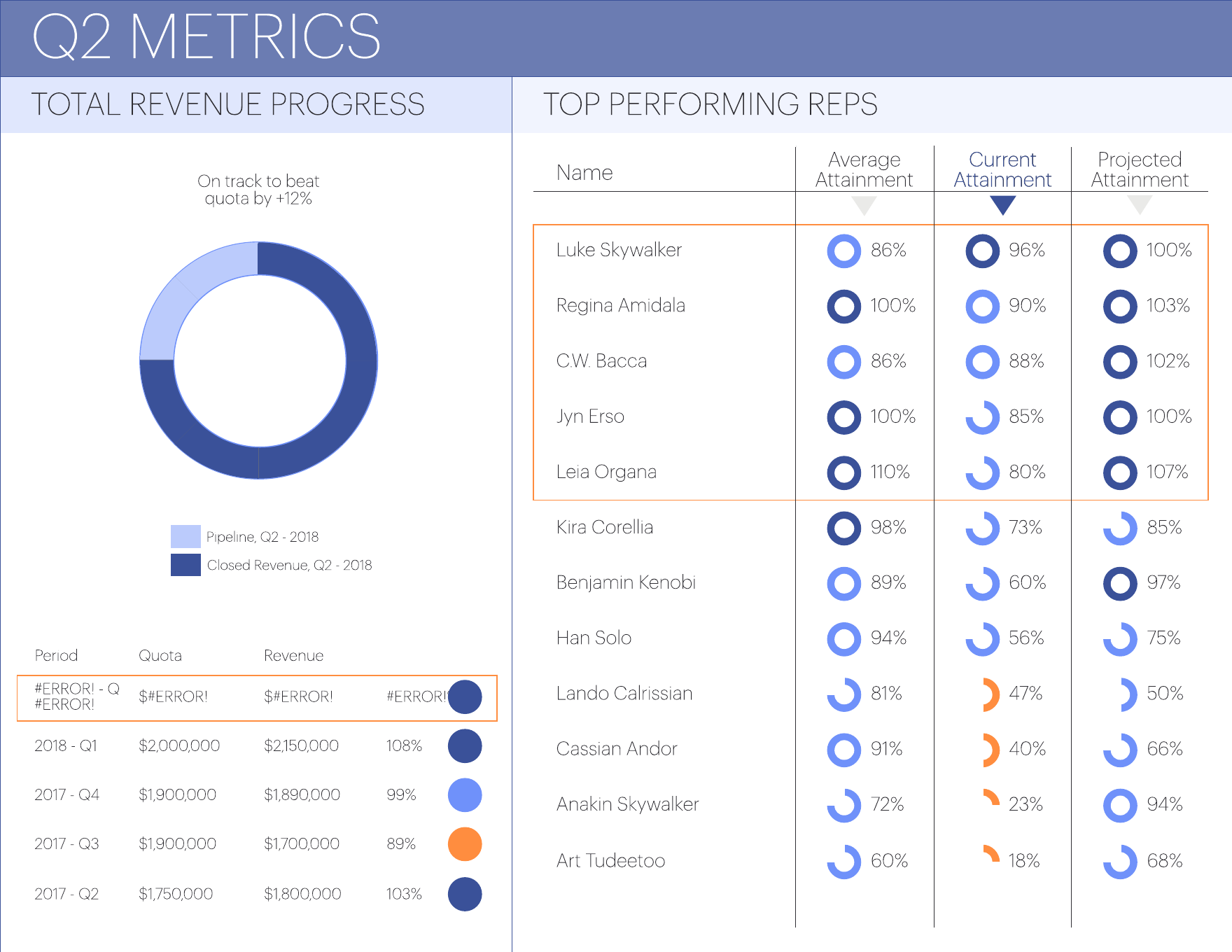
Tips for building a successful sales compensation plan
Lucid Content
Reading time: about 7 min
Topics:
Sales compensation plans are the most significant driver of success in sales operations and also one of the biggest financial investments of the organization. With such high stakes, it’s crucial to get your plan right.
But what does that mean? And what does a successful commission plan look like?
Sales compensation plans need to be designed strategically in order to drive the right sales and elicit the desired behaviors from your reps.
While the right plan will look different for every organization, review these steps and best practices to follow when structuring your own sales compensation plans.
Note: Much of this article is based on thought leadership from Jacco van der Kooij, the founder of Winning By Design. Learn more about our new partnership with Winning By Design, which includes exclusive Lucidchart templates.
How to design a strategic compensation plan
Ready to get started? Follow these steps to build out a compensation plan for your sales org.
1. Establish business objectives
Before you begin to crunch numbers and dig into sales territories and roles, you have to start at the very top. The best sales compensation plans are strategically aligned with the organization’s objectives.
You first have to identify exactly what your business objectives are. Work with executive stakeholders to understand the business’s strategic goals so you can design a plan that focuses on measuring and incentivizing performance that will actually support those objectives.
2. Identify sales roles
With the business strategy in place, you can now hone in your sales force. Identify the sales roles within the organization that you will include in the commission plans (e.g., hunters, farmers, channel partners, etc.). Each sales role will need a specific compensation plan.
Some common customer-facing sales roles include:
- Sales development representative (SDR): Focuses on prospecting.
- Account executive (AE): Focuses on sales acquisition.
- Customer success manager (CSM): Focuses on onboarding and training the customer to get the most value out of the product/service.
- Account manager (AM): Focuses on renewal, upsell, and cross-sell from existing customers.
Within these roles, you can create junior and senior positions to fairly compensate employees with entry-level positions and more experienced employees who are focused on larger, more strategic deals.
3. Define and align your sales objectives
Next, you must define and align your sales objectives. For instance, your sales objectives might include one or more of the following:
- Expand market share by X amount
- Win # of new accounts
- Introduce new products
- Increase revenue by Y amount
For your compensation plan to be successful, you need to know exactly what your sales goals are so you can create incentives that support those initiatives.
Keep in mind that your sales objectives should be closely aligned with your aforementioned business goals. By strategically aligning your business and sales objectives, you can ensure your sales force is driving success at the organizational level.
4. Determine pay structure
Here’s where we get to the meat and potatoes. With your business and sales goals aligned, you can drill down into the specific structure of your compensation plan. To do this, you will need to determine target pay, pay mix, and upside potential for each sales role.
Target pay
The target pay (also called total target compensation or on-target earnings) is everything the company provides to the employee including base salary, commission, bonuses, and perks. This number will help you budget and break down the rest of the commission payout.
Pay mix
The pay mix is the ratio of base salary to target incentives that make up the total target pay. For example, a 60/40 pay mix means 60% of the employee’s compensation package is a fixed salary and 40% is potential earnings from incentives.

How you balance the pay mix will depend on the sales roles and your overall goals. Swing too far to either side and you’ll incentivize (or deincentivize) the wrong behaviors.
Generally speaking, your pay mix should be more aggressive for roles that have a higher influence on the final purchasing decision. For instance, as closers, account executives should have aggressive pay mixes to incentivize them to hunt down new opportunities.
Upside potential
Upside (or leverage) is the amount of pay available to sales reps who exceed their quotas. Upside can be a valuable motivational tool but should be incorporated into your plans thoughtfully. Like pay mix, the more influential the sales role is on the final purchase, the greater the upside opportunity should be.

Tips for a successful compensation plan
As you go through the steps above, keep the following guidelines in mind to ensure that your compensation plan helps you to achieve your organization’s goals.
Communicate strategy
Your business strategy should not be an organizational secret. Your sales compensation plans should ideally be aligned with corporate strategy and help your sales force achieve the business’ strategic goals. But if your sales reps don’t understand what your strategy and goals are, they will have a harder time aligning their behaviors.
For best results, be transparent and clearly communicate your strategic objectives at every level of the organization.
Don’t forget supporting sales roles
Closers are not the only part of a deal’s success. Make sure you are rewarding your sales force throughout the sales lifecycle.
For instance, if you have sales reps generating leads that they hand off to a closer, it can be demotivating to be left out of a commission on those sales. Consider including shared commission options or bonuses to support each stage of the sales pipeline.
Adapt commission based on experience
Many organizations apply a higher base salary with low commissions for new hires as they train and familiarize themselves with their new role or territory.
In these cases, the base salary and commission have an inverse relationship that adapts over time to the sales rep’s experience. As the rep gains experience, the base salary will decrease and the commissions will ramp up.
This strategy helps alleviate pressure on new reps as they learn the ropes. It’s a good way to help your reps master your sales process and build a strong foundation of sales skills during the training period without the pressure to hit sales quotas right away.
Budget for extras
The main sales compensation plan shouldn’t completely replace smaller ad hoc competitions and prizes. When building your compensation plan, make sure you include a budget for these kinds of extras.
This tactic will give sales managers the freedom and flexibility to sprinkle in additional bonuses and SPIFFs when morale needs a boost, when the team is experiencing a sales slump one week, or if there is a change in the competitive market.
A word of caution: While you should have a nominal budget for these extras, keep in mind that you should use them sparingly. A well-designed compensation plan should do most of the heavy lifting when it comes to driving sales behavior. Extra contests remove the focus from the core compensation plan and can, therefore, disrupt your strategy.
Monitor and evaluate
No matter how well thought out or carefully designed your compensation plan is, be sure to regularly monitor and periodically evaluate its effectiveness.
Consider:
- Are we using the best metrics?
- Is the plan driving the behaviors we want?
- Are there any issues we didn’t anticipate that need to be addressed?
- Is the plan correctly aligned with our business goals and strategy?
For best results, create a clear process for evaluation that executives and stakeholders can follow on a quarterly basis. These check-ins will ensure your plan is working as desired and allow you to make adjustments and course corrections in a timely manner.
Use the right tools
Creating effective sales compensation plans is no small task. There are many factors to consider, roles to weigh, and numbers to crunch. However, the right tools can help make the process smoother.

Lucidchart is an intelligent diagramming application that helps sales operations run more effectively. Sales managers can use Lucidchart to create org charts and process flows that explain each person’s roles and communicate the compensation plans clearly. Individual sales reps can even build visual dashboards to see whether they are on track to hit their numbers and earn that commission.
Eliminate confusion with elegant visuals that show how the sales and business goals align.

Push your sales team further. Learn how to create a sales dashboard.
Learn moreAbout Lucidchart
Lucidchart, a cloud-based intelligent diagramming application, is a core component of Lucid Software's Visual Collaboration Suite. This intuitive, cloud-based solution empowers teams to collaborate in real-time to build flowcharts, mockups, UML diagrams, customer journey maps, and more. Lucidchart propels teams forward to build the future faster. Lucid is proud to serve top businesses around the world, including customers such as Google, GE, and NBC Universal, and 99% of the Fortune 500. Lucid partners with industry leaders, including Google, Atlassian, and Microsoft. Since its founding, Lucid has received numerous awards for its products, business, and workplace culture. For more information, visit lucidchart.com.
